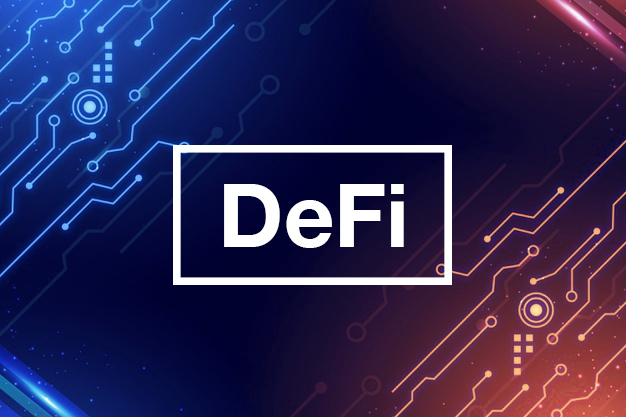In contrast to the bank where people are in charge of the system, in DeFi, code acts as one. What does that mean? Basically, the algorithms are built on immutable pieces of code which keep the financial system up and running.
Evolution of Financial Economy
Let’s start from the beginning of the time when the earliest method known to humans for market transactions was the barter system. It got the people interacting with each other and could do the trade if both the parties involved had the matching requirements. You’ve got apples, need oranges, then go and find somebody who needs apples and have oranges. As we all pretty much know, barter was a very ineffective way of financial economy.

Second to that came gold and silver coins that had tangible value since these metals were used for other purposes too.
Then we got introduced to the paper currency simply called money. A concept we all are familiar with as we have been using it for quite some decades now. It allows non-barter transactions and acts as a medium of exchange. It further broadened the horizon for modes through which payments could be done.
Few more years pass by, internet banking and contactless payments are in the financial-economic sphere too.
Be it a bank transfer, swiping your credit/debit cards, or online transactions, you surely must have noticed the fees that are charged to your account. Right? One of the reasons for us to support and be in favor of the cause, is, decentralized finance.
Before we start to dwell upon Decentralized Finance, also known as DeFi, let us first discuss the current financial system, Centralized finance, that is followed within our society and around the globe.
What does Centralized Finance mean?
Let me first explain to you what centralization means for you to be able to understand Centralized Finance better and its shortcomings.
Centralization refers to the process where from planning to crucial decision making to the execution of a project, everything is handled by a leader of an organization.

The system and the services we currently use are all centralized as they are regulated and maintained by the government and bank officials.
Since people are in charge when it comes to the traditional financial system, making the whole economic sphere vulnerable and prone to frauds, corruption, mismanagement by authorities and so much more. For instance, the 2008 – 2011 Irish banking crisis is one of the historic banking failures.
Limitations of Centralized financial economy:
- Centralized control: The bottom line is our banks hold significant power and influence when it comes to everything that’s related with money and the way it is traded. The bank gets to do decide who all are eligible to get bank accounts, can intercept you from making any transactions, cancel your bank credentials, etc.
- Accessibility: According to the global findex database, around 1.7 billion people are unbanked. 1.7 billion people without bank accounts? Imagine that. Even though banks have been operated for so many decades now, not everyone is eligible to use their services.
- Commision or hidden fees: There are always some transactional charges applied to your account no matter how big or small of an amount that may be. Per-transaction fee can vary from 0.5 to 5% depending upon the service providers along with some additional fixed charge.
- Safety and Security breaches: The internet banking has no doubt made monetary exchange easier and faster for people but has exposed us to problems like net banking frauds, stolen passwords, credit card theft and so much more. There is always the chance of bankruptcy involved along with public debt, a risk we all willingly take. We trust our money with the banks because we do not really have many options to choose from anyways. Banks are inevitably exposed to risks which sometimes lead to economic fluctuations, for example, the great recession of 2008.
What is DeFi?
Now that we have an understanding about Centralized finance (CeFi) and its limitations, we are all set to learn about DeFi.
DeFi is a technology dependent financial system. It merges the concept of traditional banking with blockchain technology.

Since there is no way one can change the code, it is safe to say that security breaches and hacking are next to impossible.
This system is not only open to everyone but is censorship free, much cheaper in terms of applied transactional fees, safe and secure.
Foundations of DeFi
DeFi depends on three factors which are Cryptocurrency, Blockchain, and Smart contracts.
- Cryptocurrency: It is a digital token that acts as a currency which you can use for transactions and is cryptographically secured. An owner has to enter their private key, public key and digital signature for the trading of their cryptos.
- Blockchain: The technology has exploded in the past couple of years and the credit pretty much goes to Bitcoin. If explained in simple terms, blockchain consists of blocks of data that are tied together. Each block consists of relevant data, a hash which is used to uniquely identify a piece of information and hash of the previous block. Any tampering with the data would also cause the hash to change and therefore making the following blocks in the chain irrelevant. This mechanism makes blockchain secure.
- Smart Contracts: It is a piece of code that makes up an algorithm that runs on top of the blockchain. It empowers trustworthy agreements and secure crypto trades between users while still maintaining their anonymity. With the help of smart contracts, we can allow other people on the network to use our funds while still keeping their custody. No external institution is held accountable for checking if the conditions are being met or not, everything is automated and unbiased irrespective of who the user is.
Pillars of DeFi :
Stablecoins
Cryptocurrencies are volatile in nature and are subject to high fluctuations with respect to their asset value. This harms the credibility of digital currencies and so as a solution to this issue, stablecoins were put into existence and are being used.
Stablecoin is tied with some other assets in order to prevent a large swing to its value. It is usually attached to fiat money (US Dollars) but could be related to any other real-world assets like gold, etc. Even though the USD can have a shift in its value, its volatility is nowhere as high as that of virtual currencies.
Types of stablecoins based on the collateral structure:
- Fiat backed stablecoins:
- These are the most popular type of stablecoin which are backed by fiat asset reserve.
- The digital assets are attached with the fiat currency in 1:1 ratio.
- The most commonly used fiat currency is USD which is held off-chain, i.e., the reserve contains at least the same amount of fiat currency as the stablecoins so that any user can cash out their coins at any time.
- Crypto backed stablecoins:
- The value of these types of stablecoins are attached with cryptocurrencies. MakerDAO DAI is the most popular crypto-backed stablecoin.
- Since digital currencies are used as a collateral they are issued on-chain.
- The users can obtain crypto backed stablecoins by locking their virtual currencies in the smart contracts and getting the tokens of equal representation worth in return.
- Algorithmic backed stablecoins:
- These stablecoins are not backed by any assets, but use complex algorithms and smart contracts for stabilizing the price.
- The price stability is maintained by factoring in supply to demand ratio of tokens.
- If the market price of the stablecoin falls below the fiat currency, then the system reduces the number of tokens that are being circulated in the network and vice versa.
- Commodity backed stablecoins :
- These stablecoins use real estate, oils or precious metals like gold as a collateral.
- The value of this type of stablecoin is likely to fluctuate.
- Two of the most popular gold backed stablecoins are Tether gold (XAUT) and Paxos gold (PAXG).
Lending and Borrowing
As far as the traditional financial system is concerned, there are contracts signed between the bank authorities and customers with some legal consequences that one needs to adhere to.
But since cryptocurrencies promote the anonymity of the users, a question might come to your mind: what if users put down the necessary collateral and never pay back the whole amount? And since there is no way of tracking a user down, doesn’t it make the whole concept flawed? Does the term smart contracts ring any bells? That’s the solution to your questions.
The users enter into smart contracts where they have to lock their cryptocurrencies and receive C tokens or A tokens in return. These tokens are a representation of the user’s original coins plus the interest one will get, if they are lending the funds to someone.
If the user is borrowing the funds, then they have to over collateralize their loan. That means they would have to pay back more than just the full amount.
Some of the most popular crypto lending and borrowing platforms are Aave, Compound and Maker.
Decentralized Exchanges
Decentralized exchanges or Dexes, are based on autonomous decentralized structures which are nothing but lines of codes. It eliminates the layer of the third-party organization while doing any transaction, giving full authority and control of funds to the users themselves.
Decentralized Exchange apps (dApps) are an excellent choice for users who regularly want to trade their crypto assets without any involvement of CeFi exchanges that charge huge amounts of the transactional fees.
dApps are accessible to everyone, permissionless, middlemen free and censorship resistant.
UniSwap on Ethereum network and PancakeSwap on Binance smart chain network are two of the most popular DEXs.
Insurance
Just like how we buy insurance for our new car, to have coverage and save ourselves from any losses that might occur due to accidental events, we secure our capital in case the platform gets hacked or stablecoins lose its market value.

Insurance happens in a decentralized way, where a user gets the coverage from a pool of liquid funds instead of a single person or an organization.
Anyone can lock their assets in the insurance pool and become a coverage provider.
When the claims are made, they are verified either by oracles or the community itself.
Oracles are third-party information providers that connect and bridge the gap between real-world and isolated blockchain network protocol.
Limitations to DeFi
- Smart contracts with flaws in the code can be exploited which could lead to loss in assets.
- The real-world data has to be fed into the blockchain network through oracles which makes data vulnerable and prone to centralization issues.
Conclusion
A decentralized financial system allows peer-to-peer interaction on the network where users manage their own assets. The system is secure, reliable, immutable, and accessible to all. The transactions are done via smart contracts making the whole process trustworthy and unbiased.
One thing we are sure of is that upcoming years will see the boom in DeFi. By removing the intermediary layer of middlemen, the risk of monopolization and corruption of assets will be significantly decreased.
